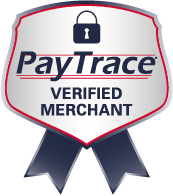Content Marketing
From the beginning of time, agencies and other businesses have used content marketing to support their products and services. Everything from the quaint-looking ads in the Victorian-era newspapers to today’s business blog posts is based on providing the information buyers need or want.
But now buyers, being bombarded with information from every direction, want more from our content marketing than to just receive the same blast messages sent to everyone else.
Today we need better precision, better accuracy, and better ROI.
How do we do that?
By using “Content Mapping.”
Content Mapping
Content mapping is the method of ensuring that relevant content is delivered to your buyer at the right time in their buying cycle.
According to Ardath Albee (“eMarketing Strategies for the Complex Sale”) content mapping takes advantage of the information you have already been collecting about your buyers in order to identify, at each point in the buying cycle, who the customer really is (especially important in larger companies), how he or she prefers to “consume” your content, and what they will need and want to know at each point in the cycle.
Since the standard sales funnel contains more sections than just the top (interest) and bottom (final choice), it’s important to consider the “in between” steps of the buyer’s behavior that require this “mapped” approach.
The Middle of the Sales Funnel
Between the two ends of the funnel, the buyer is conducting research, reviewing options, choosing from among those options and then stepping back to validate their final choice before committing.
While the buyer is in this “middle-of-the-funnel,” we need to prove that we not only have the solution they need, but that we can provide the information they need to build the business case that supports their choice.
In other words, we need to ensure that we have mapped content to be delivered to the buyer at the right time that reassures the buyer that our option is the best solution.
The Right Information at the Right Time
Barbra Gago, of the Content Marketing Institute, adds that the early stages of the buying cycle are supported more by providing educational materials. As the cycle progresses, you need to demonstrate both your expertise and product/service suitability. Then, towards the end of the cycle, your content needs to differentiate you from your competition and tell the buyer more about your business (such as in the “About Us” page of your site).
The following types of content should be mapped to the most appropriate step in your prospect’s buying process:
- Status Quo/Nurturing: Providing educational articles that establish you as a thought leader covering new developments and solutions.
- Research: Creating white papers that showcase your expertise and that helps build the business case for your solution.
- Options: Summarizing case studies and customer success stories, including customers’ additional reasons for choosing you.
- Priority Shift: Offering webinars detailing how your product is the best solution for their problem.
- Step backs: Providing content that supports any previously-identified reasons a buyer may hesitate to go through with the purchase.
- Validation: Writing content that proves your company’s viability, service capabilities, and activities that are all part of the customer experience with you. (Testimonials and research reports highlighting your product or service are highly effective.)
- Choice and Commitment: Developing customer proposal templates or other customized offers that keep your buyer front and center (i.e. not your company) after they have chosen your solution.
While this may sound like a lot of work, content mapping has become an important part of a successful marketer’s inbound marketing strategy to separate him-or herself from the noise in the marketplace.
This approach will help you identify content gaps, address customer needs, and keep your message on track all the way through the funnel, ensuring higher rates of success for you and your company.
Content mapping supports your overall marketing strategy from content creation to social media.
It provides a solid foundation that matches your buyer persona with the most effective information at each stage of the buying cycle.


